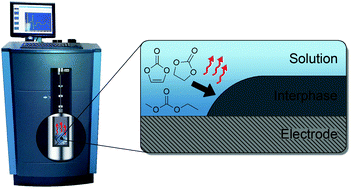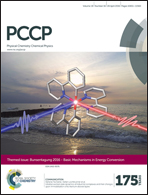Isothermal microcalorimetry as a tool to study solid–electrolyte interphase formation in lithium-ion cells†
Abstract
Isothermal microcalorimetry can be used in conjunction with electrochemical measurements to study solid–electrolyte interphase (SEI) formation reactions as they occur in a Li-ion cell. The heat flow was measured in wound cells that contained no electrolyte additives and in cells prepared with four additives that are known to produce an SEI at the negative electrode surface: vinylene carbonate (VC), fluoroethylene carbonate (FEC), pyridine boron trifluoride (PBF), and prop-1-ene-1,3-sultone (PES). For VC, two distinct features in the differential capacity (dQ/dV vs. Q) plot that align with overlapping peaks in the heat flow plot do not agree with a simple one-electron reduction followed by anionic polymerization. For FEC, three distinct differential capacity and calorimetric peaks are observed. Heat flow measurements at multiple PBF concentrations show that PBF reduction does not significantly affect the reduction of EC at higher cell voltage. The total heat flow during SEI formation in PBF- and PES-containing cells match the calculated energies in recently published reaction pathways. It is concluded that IMC may be used to study the underlying chemistry of SEI formation, especially when paired with computational studies.



 Please wait while we load your content...
Please wait while we load your content...